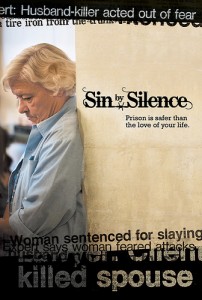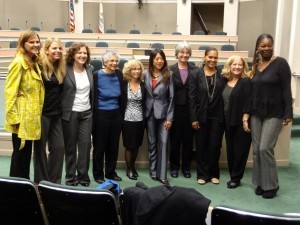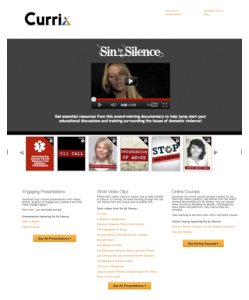WHAT’S THE STORY?

The title of the film comes from the Abraham Lincoln quote, “To sin by silence when we should protest makes cowards of men.” I wanted to break the silence. I wanted this documentary to spark vital conversations to begin protesting the incarceration of battered women and the silent crisis of domestic violence. I wanted the film to help create environments for victims of abuse to feel comfortable to finally ask for help. I wanted the film to ignite a passion in individuals to finally speak up and say to that friend they are worried about, “Is everything alright? I’m really worried about you.” Just saying such a simple phrase could eventually be the difference between life and death of someone.” – Olivia Klaus, Director & Producer
WHAT WERE THE GOALS?

- Create awareness and conversations about the silent tragedy of domestic violence.
- Build connections and mobilize individuals around the domestic abuse prevention movement, with a focus on local resources for involvement.
- Educate communities about the effect of domestic violence and the urgent need for prevention and change.
- Help influence others to join the movement.
WHAT WAS DONE?
Sin by Silence premiered at the Cleveland International Film Festival in March 2009. The following fall, they launched the Stop the Violence community tour to take the film directly into communities that needed to hear the message and could create change. In planning the Stop the Violence initiatives, the team identified those states with the worst domestic violence statistics. Utilizing the National Coalition Against Domestic Violence statistic reports, the team reviewed statistics and formulated a plan that targeted Arizona, California, Indiana, Kansas, Louisiana, Missouri, New Mexico, Ohio, Texas, and Washington. The team connected with each state’s domestic violence coalition to identify where a screening might best be utilized within their network and to develop a plan of action. They then connected with various organizations, non-profits, universities and churches that would benefit from a screening of the film and discussion. To maximize the effectiveness and reach of the film, they scheduled the tour to coincide with Domestic Violence Awareness Month in October 2009, allowing them to on expand upon the outreach efforts already in place through community partners. The Stop the Violence tour traveled throughout 10 states, had 40 screenings, and connected with over 5400 screening attendees. A safe places was created for audience members to share their own personal stories of tragedy. Organizations connected with new advocates who were ready to join the cause and begin working together. Based on audience reaction as well as statistics, Sin by Silence team also focused on reaching youth, using the stories of the CWAA women, who met their abusive partners in their teenage years. The Stop the Violence tour included 10 events on college campuses, which had higher participation than regular community screenings. Based on this fact, they launched a campus initiative. The Sin by Silence team also created teaching videos designed to spark further discussion. By creating more than two hours of additional video content, they were able to include interviews with experts on abusive relationships, law enforcement leaders and leaders in faith-based communities about domestic violence, incarceration and more. In 2009, Women Make Movies released this educational DVD; it still remains a top seller. The team also created digital versions of their resources to help educators and advocates, creating kits that were accessible through the website. This allowed the campaign to continue and facilitated the film’s continued use. In addition, almost two years after its festival premiere, the film secured a broadcast on Discovery Networks reaching 2.2 million viewers, providing yet another platform for the film.WHAT WAS ACHIEVED?
In addition to the 40 tour events, 427 host-a-screening kits were ordered and there were 258 events hosted on university campuses. Many of these screenings led to unique conversations and actions that are difficult to document. Here are some the more tangible things we do know happened after screenings:- Students started a campaign to help free Norma Cumpian after spending 18 years behind bars for defending the life of her unborn son against her abusive boyfriend. The campaign collected over 2000 signatures and viral videos circulated online. Norma was released from prison in November 2011. The CA Attorney General acknowledges the impact of public support for her release as the main reason that influenced the Governor’s decision.
- Inmates at Indianapolis Women’s Prison launched Convicted Women Against Abuse after a screening on October 22, 2009.
- A local artist started a monthly art class for the children staying at the Family Violence Center shelter in Springfield, MO.
- A local photographer donated time and supplies to take personal portraits for the families seeking safety at Lydia’s House in St. Louis, MO.
- 10 Berkeley Law students signed up with the Habeas Project to begin providing legal services for the women of Convicted Women Against Abuse.
- 20 students at California Lutheran University volunteered for a “work day” to clean up, paint, restore, and help at provide Crossroads – an organization that provides housing, education, support and counseling in a homelike environment for domestic violence survivors who have been incarcerated.
- The Gender and Sexuality Center, at the University of San Francisco, saw a 600% increase above normal, daily visits of young girls seeking help and counseling the day after an event.
- The entire floor of a girl’s dormitory at Chapman University College signed up to volunteer as their semester activity with a local shelter.
- 10 students from Pacific Lutheran University in Tacoma, WA began to volunteer at the Crystal Judson Family Justice Center.
- NewportWomen of Newport Beach, CA became a sponsor of their local shelter, The Women’s Transitional Living Center. Each week they host a self-help/empowerment group for the survivors in the shelter, have done numerous “home improvement weekends” where an entire church group comes and does repairs, painting, etc., and they continue to donate supplies (beauty products, clothing, necessities and gift cards) as needed when a survivors is ready to leave the shelter.
- At premiere screening in Cleveland, OH, Laura Cowen took the step to finally share her horrific story of abuse endured for the first time in public. Since then, she has been volunteering at the local shelter, became a Red Cross Community Hero of 2010, and her story was featured on the front page of the LA Times.


